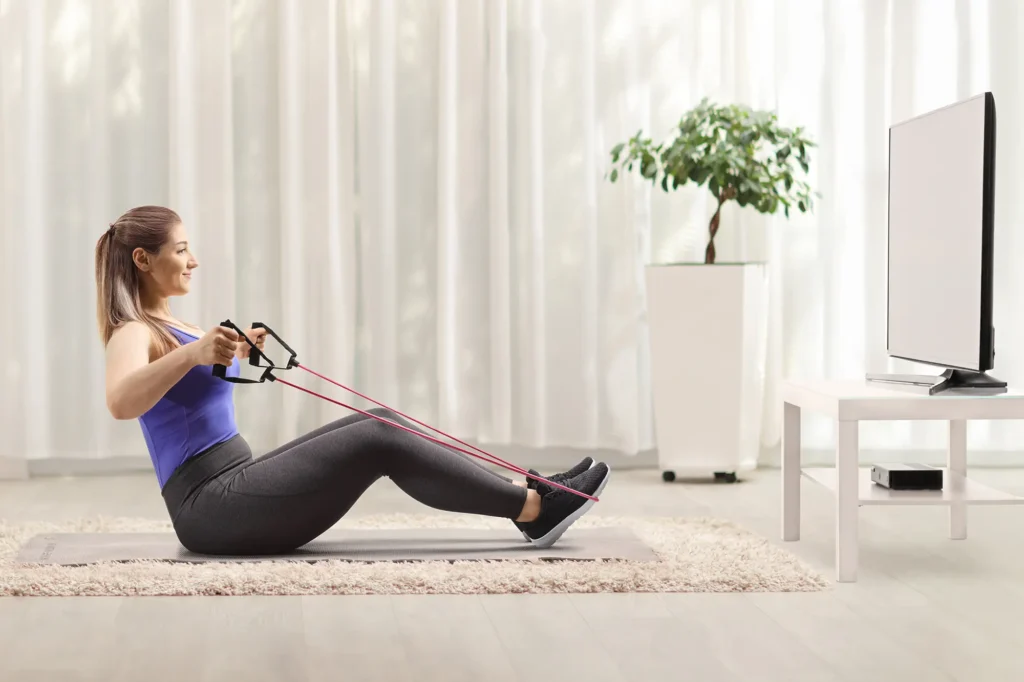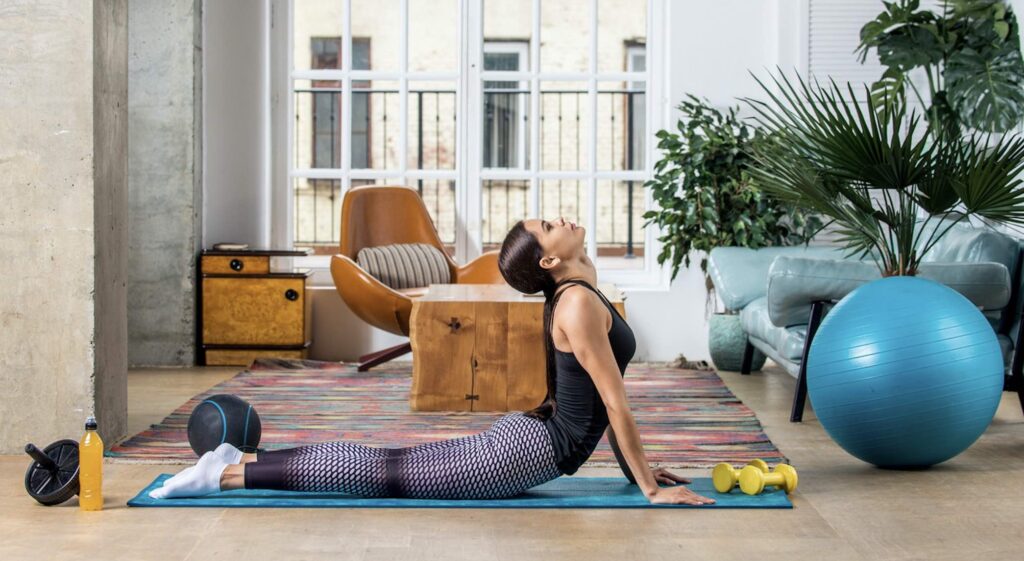Embarking on a fitness journey can feel like a daunting task, especially for beginners. The plethora of workout options, equipment requirements, and fitness myths can often lead to confusion and frustration. The good news is that achieving your fitness goals doesn’t require a gym membership or elaborate equipment; all you need is the motivation to get started and a commitment to your health. At-home workouts have gained popularity for their convenience, flexibility, and accessibility, allowing you to mould your fitness routine to fit your lifestyle.
In this ultimate beginner’s guide, we’ll explore effective at-home workout routines that cater specifically to newcomers to the fitness world. Whether you’re looking to build strength, enhance your cardiovascular health, or simply improve your overall well-being, this guide will provide practical workouts, expert tips, and the motivation needed to help you kickstart your journey. So grab your water bottle, clear a space in your living room, and let’s dive into the exciting world of fitness, one step at a time!
Why Choose At-Home Workouts?
In recent years, at-home workouts have rapidly gained popularity, and for good reason. There are numerous advantages to choosing to exercise in the comfort of your own home that can help beginners ease into their fitness journey. Here are some compelling benefits of at-home workouts that you might consider:

1. Convenience and Flexibility
One of the primary advantages of at-home workouts is the unparalleled convenience they offer. You can exercise at a time that suits your schedule, whether it’s early in the morning before work, during your lunch break, or late in the evening. There’s no need to commute to a gym or adhere to operating hours, making it easier to fit workouts into your daily routine. This flexibility can be particularly beneficial for beginners who may be juggling multiple commitments like work, family, and social life.
2. Cost-Effectiveness
Gym memberships can be costly, with fees that add up over time. In contrast, at-home workouts require minimal or no investment, especially if you start with bodyweight exercises. Many effective workouts can be done using just your body, while a few simple pieces of equipment, such as resistance bands or dumbbells, can take your training to the next level without breaking the bank. Additionally, the savings from not having to travel to a gym or engage in additional classes can leave more room in your budget for nutritious food and other wellness-related expenses.
3. Comfort and Privacy
Exercising at home provides a level of comfort and privacy that many beginners appreciate. The gym can be intimidating, especially for those who are self-conscious about their fitness level or who are new to working out. At home, you can find your own space, wear whatever you feel comfortable in, and move at your own pace without the pressure of onlookers. This can help to foster a sense of security and encourage a positive mindset as you embark on your fitness journey.
4. Personalised Learning Experience
When working out at home, you have the freedom to choose workouts that resonate with you without feeling pressured to keep up with others. You can explore different types of exercises, from yoga and Pilates to strength training and aerobic routines, finding what you truly enjoy. Many online resources, tutorials, and fitness apps provide guidance specifically designed for beginners, allowing you to learn at your own speed and follow along with clear instructions.
5. Consistency and Habit Formation
At-home workouts can help promote consistency in your fitness regimen. The ease of access eliminates the hurdles that often come with gym workouts, making it less likely that you’ll skip a session. As you establish a regular routine, the behaviours you cultivate can translate into long-lasting habits. Developing consistency in your workouts can significantly contribute to your overall fitness success, as regular exercise is key to achieving your goals.
6. Family-Friendly Options
For those with children or family commitments, at-home workouts can be a fantastic solution. You can involve your family in fun activities that promote physical fitness, such as family workouts, dance parties, or outdoor games. This fosters a healthy lifestyle for everyone while allowing you to bond with your loved ones.
Setting Realistic Fitness Goals

Embarking on a fitness journey can be both exciting and overwhelming, especially for beginners looking to improve their health and physical well-being. Setting realistic fitness goals is crucial to ensuring your success and maintaining motivation over time. Well-defined goals provide direction, a sense of purpose, and milestones to celebrate along the way. Here’s how to set achievable fitness objectives that can guide your path forward.
1. Understand the Importance of Goal Setting
Goal setting is an essential component of any fitness journey. Goals help you clarify what you want to achieve, create a roadmap to reach those achievements, and measure your progress. When you set specific and attainable goals, you’ll increase your chances of sticking with your fitness routine and feeling accomplished as you reach each milestone.
2. Use the SMART Criteria
One effective method for defining your fitness objectives is to use the SMART criteria. This stands for Specific, Measurable, Achievable, Relevant, and Time-Bound:
Specific: Define your goal as precisely as possible. Instead of saying, “I want to get fit,” specify what that means for you. For example, “I want to be able to run a 5K without stopping.”
Measurable: Choose a goal that can be tracked. For instance, “I want to lose 10 pounds in three months” or “I want to perform 20 push-ups in a row by the end of this month.”
Achievable: Set goals that are realistic based on your current fitness level, resources, and lifestyle. It’s important to challenge yourself but avoid setting goals that are impossible to reach.
Relevant: Ensure your goals align with your overall vision for your health and well-being. Consider why you want to achieve these goals and how they fit into your life.
Time-Bound: Establish a clear time frame for your goals. For example, “I will complete a strength training program for the next 6 weeks.”
3. Start Small and Build Momentum
As a beginner, it’s important to set goals that are achievable to build confidence and momentum. Instead of aiming for an ambitious outcome right away, focus on smaller milestones. For example:
Short-Term Goals: Aim to work out three times a week for the next month, or incorporate 10 minutes of daily stretching.
Medium-Term Goals: Plan to complete a specific workout program or participate in a local fitness challenge within the next three to six months.
Long-Term Goals: Visualise where you want to be in a year or two. This could be completing a half-marathon, reaching a target weight, or significantly improving your strength and endurance.
4. Be Flexible and Adjust as Needed
Life can be unpredictable, and your fitness journey may not always go as planned. It’s important to remain flexible and open to adjusting your goals based on your progress, setbacks, or changes in circumstances. If you find a particular goal is too challenging, consider modifying it rather than abandoning it completely. This adaptability will help keep you engaged and committed to your fitness routine.
5. Celebrate Your Achievements
As you work towards your fitness goals, take the time to celebrate your achievements, big or small. Recognizing your progress boosts motivation and reinforces positive behaviour. Whether it’s treating yourself to new workout gear, enjoying a favourite healthy meal, or sharing your accomplishments with friends, acknowledging your hard work is essential.
6. Stay Accountable
Consider sharing your goals with a friend, family member, or fitness community. Accountability can serve as a powerful motivator, encouraging you to stick to your plan. Joining online fitness forums or local workout groups can provide support, advice, and camaraderie as you navigate your fitness journey.
Frequently Asked Questions
1. What equipment do I need for at-home workouts?
You can start with minimal equipment! As a beginner, bodyweight exercises (like push-ups, squats, and lunges) are a great way to build strength without any gear. If you want to enhance your workouts, consider investing in a few basic items, such as resistance bands, dumbbells, a yoga mat, and a stability ball.
2. How often should I work out as a beginner?
As a beginner, aim for at least 2 to 3 workouts per week to start, focusing on a mix of strength training, cardio, and flexibility exercises. As your fitness level improves, you can gradually increase the frequency to 4 to 5 days a week. The key is to listen to your body and allow rest days for recovery.
3. Can I get the same benefits from at-home workouts as I would at a gym?
Absolutely! At-home workouts can be just as effective as gym sessions when done consistently and with proper form. You can achieve improvements in strength, endurance, and flexibility by following structured workout plans and progressively challenging yourself, similar to what you would do in a gym setting.
4. How do I stay motivated to work out at home?
Staying motivated can be challenging but using a few strategies can help. Set specific, achievable goals, create a schedule that fits your lifestyle, and vary your workouts to keep things fresh. Additionally, consider joining online fitness communities, following workout videos, or enlisting a workout buddy to add accountability and make exercising more enjoyable.
5. What should I do if I don’t know how to perform a specific exercise?
If you’re unsure how to perform an exercise correctly, look for reputable online resources that provide tutorials or videos, such as fitness apps, YouTube channels, or websites tailored for beginners. This way, you can learn proper techniques and avoid injury. Additionally, many fitness programs include comprehensive instructions for various exercises to guide you.
Conclusion
In conclusion, embarking on your fitness journey at home is a fantastic way to cultivate a healthier lifestyle while enjoying the convenience and comfort of your own space. By setting achievable goals, exploring a variety of exercises, and staying consistent, you can effectively improve your strength, endurance, and overall well-being. Remember to prioritise proper form, listen to your body, and celebrate your progress, no matter how small. With determination and the right approach, you’ll not only transform your physical health but also boost your confidence and enjoyment of fitness, making it a rewarding part of your everyday routine.
Related Articles: Common Roadblocks: How to Effectively Reach Your Fitness Goals
Men’s Gym Clothes: Essential Outfits to Boost Your Workout Performance
Sportswear for Men Today 2024: Elevate Your Style and Performance
The Ultimate Guide to Choosing Fitness Clothing for Men: Style, Comfort, and Performance
Top 10 Women’s Gym Wear Essentials for Maximum Comfort and Style
Women’s Gym Clothes: Finding the Perfect Balance Between Style, Comfort, and Performance
Sportswear for Women: Trends, Brands, and Sustainable Practices in 2024
2024’s Hottest Trends in Women’s Fitness Clothing
Ultimate Guide to Choosing the Perfect Workout Clothing for Women
